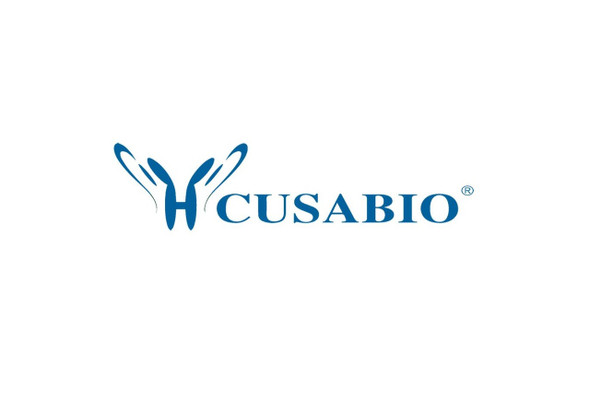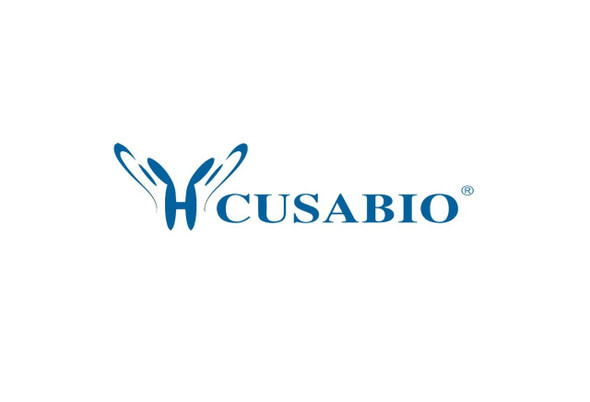Cusabio Mouse Recombinants
Recombinant Mouse Thyroid hormone-inducible hepatic protein (Thrsp) | CSB-EP726789MO
- SKU:
- CSB-EP726789MO
- Availability:
- 13 - 23 Working Days
Description
Recombinant Mouse Thyroid hormone-inducible hepatic protein (Thrsp) | CSB-EP726789MO | Cusabio
Alternative Name(s): Spot 14 protein Short name: S14 Short name: SPOT14
Gene Names: Thrsp
Research Areas: Signal Transduction
Organism: Mus musculus (Mouse)
AA Sequence: MQVLTKRYPKNCLLTVMDRYSAVVRNMEQVVMIPSLLRDVQLSGPGGSVQDGAPDLYTYFTMLKSICVEVDHGLLPREEWQAKVAGNETSEAENDAAETEEAEEDRISEELDLEAQFHLHFCSLHHILTHLTRKAQEVTRKYQEMTGQVL
Source: E.coli
Tag Info: N-terminal 6xHis-SUMO-tagged
Expression Region: 1-150aa
Sequence Info: Full Length
MW: 33.1 kDa
Purity: Greater than 90% as determined by SDS-PAGE.
Relevance: Plays a role in the regulation of lipogenesis, especially in lactating mammary gland. Important for the biosynthesis of triglycerides with medium-length fatty acid chains. May modulate lipogenesis by interacting with MID1IP1 and preventing its interaction with ACACA. May function as transcriptional coactivator. May modulate the transcription factor activity of THRB
Reference: "Cloning and initial characterization of human and mouse Spot 14 genes."Grillasca J.-P., Gastaldi M., Khiri H., Dace A., Peyrol N., Reynier P., Torresani J., Planells R.FEBS Lett. 401:38-42(1997)
Storage: The shelf life is related to many factors, storage state, buffer ingredients, storage temperature and the stability of the protein itself. Generally, the shelf life of liquid form is 6 months at -20?/-80?. The shelf life of lyophilized form is 12 months at -20?/-80?.
Notes: Repeated freezing and thawing is not recommended. Store working aliquots at 4? for up to one week.
Function: Plays a role in the regulation of lipogenesis, especially in lactating mammary gland. Important for the biosynthesis of triglycerides with medium-length fatty acid chains. May modulate lipogenesis by interacting with MID1IP1 and preventing its interaction with ACACA. May function as transcriptional coactivator. May modulate the transcription factor activity of THRB (By similarity).
Involvement in disease:
Subcellular Location: Nucleus, Cytoplasm
Protein Families: SPOT14 family
Tissue Specificity: Mainly expressed in tissues that synthesize triglycerides.
Paythway:
Form: Liquid or Lyophilized powder
Buffer: If the delivery form is liquid, the default storage buffer is Tris/PBS-based buffer, 5%-50% glycerol. If the delivery form is lyophilized powder, the buffer before lyophilization is Tris/PBS-based buffer, 6% Trehalose, pH 8.0.
Reconstitution: We recommend that this vial be briefly centrifuged prior to opening to bring the contents to the bottom. Please reconstitute protein in deionized sterile water to a concentration of 0.1-1.0 mg/mL.We recommend to add 5-50% of glycerol (final concentration) and aliquot for long-term storage at -20?/-80?. Our default final concentration of glycerol is 50%. Customers could use it as reference.
Uniprot ID: Q62264
HGNC Database Link: N/A
UniGene Database Link: UniGene
KEGG Database Link: KEGG
STRING Database Link: STRING
OMIM Database Link: N/A









